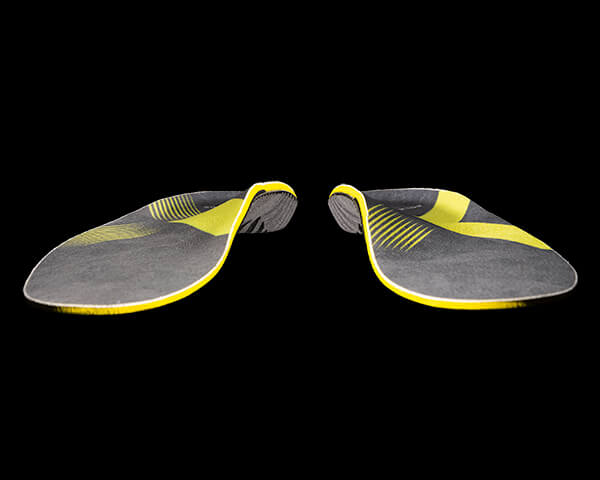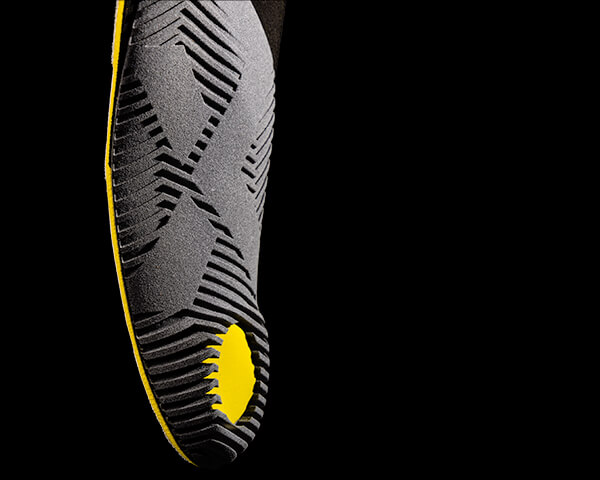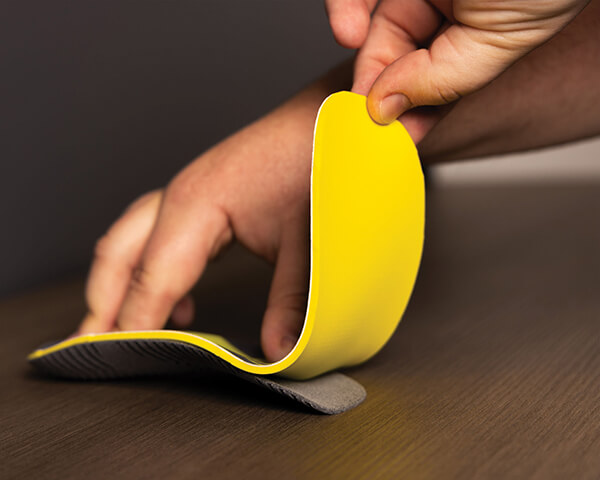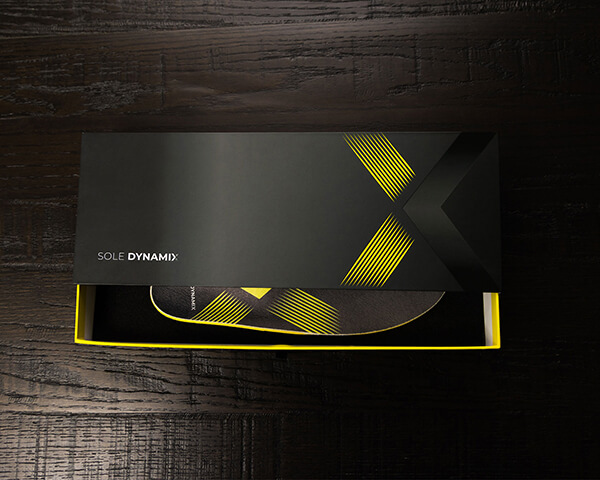6 Layers of Your Custom Insoles—How They Support Your Feet

Each layer of your custom insoles is designed to make your feet feel better.
If you have one of several foot conditions, customized foot orthotics can relieve your pain and improve the alignment of the muscles and bones of the foot. That means your feet can become healthier over time while walking with custom insoles!
If you’re a visual person, let’s look through the layers of a foot orthotic. These different parts might help your feet feel comfortable for the first time in…how long has it been?
You don’t have to understand all these technical details—any more than you need to understand a carburetor before you drive a car.
But you might be fascinated to see the features that make up a state-of-the-art custom foot orthotic and how each can help you.
1. 3D Printed Shell
This is the main structure and foundation of a custom insole. At Sole Dynamix, we use cutting-edge 3D printing to accurately make orthotics that fit each of your feet exactly.
If you have a particular condition, like bunions or plantar fasciitis, you need the shell to be manufactured exactly to your foot shape every time, allowing your custom insoles to realign your feet in a healthy way.
That’s what 3D printing does. No technician has to handle molten sheets of plastic or messy plaster these days. After designing the insole in advanced software, robotic devices lay down each layer of plastic in a clean, sealed environment.
We can even make custom shells to help you with different activities or with certain issues, such as:
- Sports
- Plantar fasciitis
- Working on your feet
- Wearing dress shoes
- Heel spurs
- Flat feet
- Pronation
- Many others
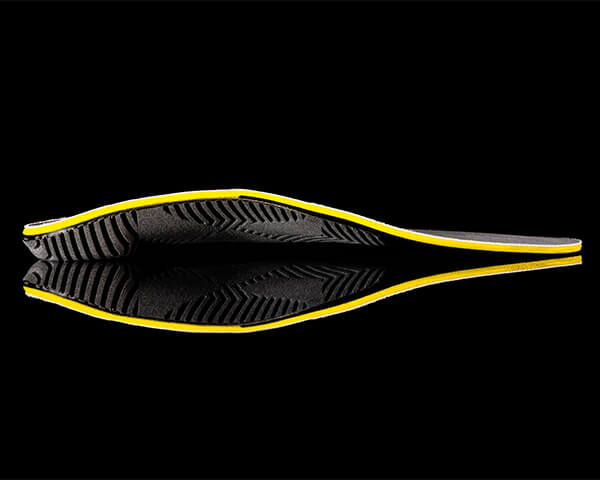
2. Semi-Rigid Arch Support
Our semi-flexible arch support region is an innovation that helps with a wide range of foot conditions. Here are a few effects it can achieve:
- Natural Movement: The custom arch helps control the movement of the foot while allowing a natural range of motion. It’s not overly restrictive.
- Pressure Relief: The arch spreads your weight across your foot, taking weight off of painful areas.
- Foot Control: Some foot problems involve the foot rolling inward too far with every step. Semi-flexible arch support lets the foot roll just the right amount for shock absorption and a natural walking style.
When the foot rolls inward the appropriate amount and not too far, the entire foot becomes healthier and less prone to injury. The foot stays in a natural, neutral position. Ligaments, muscles, and other related tissues and bones are not strained by rolling too far any more.
3. Deep Heel Cup
This is a ridge that wraps around the back of the heel, holding it and helping it stay in a healthy position.
Controlling the heel helps control the rest of the foot, keeping it in a neutral, aligned position. It also protects the ankles, knees, and more. During each step, this heel cup starts the foot in the best position, preventing painful rolling to either side. This prevents:
- Excessive pronation—rolling inwards
- Excessive supination—rolling outwards
Holding your feet in natural alignment helps protect you from injuries in general and from pain in your lower extremities, including your knees, hips, and even your lower back.
Why? Because your body needs all your joints to be aligned just right to support your weight—which starts with healthy alignment in your feet.
4. Open Heel
The open heel is an option that has been tested in foot orthotics for many years. It is a cut-out circle in the heel.
We place soft padding inside the open heel. Your heel will feel like it’s floating on air! This relieves pressure on the heel, reducing pain from:
- Heel spurs
- Plantar fasciitis around the heel
By taking the strain off of the heel, this insole layer can reduce inflammation and speed up the natural healing process.
5. State-of-the-Art Padding
The shock of each step as the foot hits the ground travels into bones and joints, which adds up over time. This gradual stress can lead to:
- Arthritis
- Knee problems
- Bulged spinal discs
- Shin splints
That’s why your custom insoles are covered in a padding that absorbs 90% of the shock of each step (compared with walking barefoot). This reduces the forces traveling to the rest of your body.
Plus, the padding is covered in an antimicrobial layer. This helps stop bacteria from growing on your insoles. And that improves foot hygiene and reduces bad smells.
6. Heel Post
The heel post makes a wide, flat base of support for your heel. Along with the heel cup (#3 above), it prevents the heel from rolling to the inside or outside during each step.
Unhealthy rolling motions start in the heel. But if your heel is gently aligned as each step starts, the rest of the foot follows, staying in a natural, neutral position.
This helps your muscles, bones, and ligaments cooperate, preventing any one part from being stressed or strained too much—which is often the reason for issues like:
- Excessive supination
- Excessive pronation
- Knee pain
- Ankle pain
Use the Custom Insole Questionnaire
If you’re interested in your own custom insoles, answer a few quick questions here. Our system will match you with foot orthotics to meet your exact needs and goals.
The questionnaire is free, and there’s no obligation to buy. Just find out the type of insoles that will help you.

